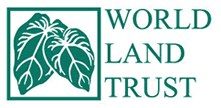Dakatcha Woodland is part of the Coastal Forests of Eastern Africa, among the 10 most threatened forest hotspots in the world which supports one of the highest densities of endemic species in the world.

Sokoke Scops Owl
For more details on our Nature Reserve and land purchase strategy, please read our Conservation Strategy.
Size of the forest: 1,800 km²
Conservation status: designated a Key Biodiversity Area (KBA) by BirdLife International and forms part of the East African Coastal Forests Hotspot defined by Conservation International.
Habitat: Dakatcha Woodland is located about 150 km north of Mombasa and 25-50 km inland from the coast. It covers an area of 465 070 acres, of which 32% is forest, 17% is woodland, and 50% has been converted to farming or open grazing land. Dakatcha lies within the Northern Zanzibar-Inhambane Coastal Forest Mosaic ecoregion and East African Coastal Forest Hotspot, characterised by a complex mix of moist and drier forest with coastal thicket, savanna woodlands and swamps. The Woodland itself is a diverse mosaic of different forest types, savannah and seasonal wetlands.
Notable wildlife: 13 Red Listed species, including four that IUCN classify as Endangered: the Sokoke Scops Owl Otus ireneae, Clarke’s Weaver Ploceus golandi, the Sokoke Pipit Anthus sokokensis and the Golden-rumped Elephant-shrew Rhynchocyon chrysopygus.
Dakatcha Woodland is part of the Coastal Forests of Eastern Africa, among the 10 most threatened forest hotspots in the world which supports one of the highest densities of endemic species in the world.
The fragmented Coastal Forests of Eastern Africa are among the ten most threatened forest hotspots in the world, and the Dakatcha IBA is listed as an IBA in Danger, with a very high threat score and a low action score. At a regional level, the pressure on land is intensifying as population increases, small holders and industrial agricultural expand, and coastal urban developments multiply.
The growing local population depends on the forest resources for their energy, construction needs, food and livelihoods. As a result, deforestation and poaching of wildlife, including the Golden-rumped Sengi, are rife. Brachylaena huillensis trees have almost disappeared due to selective harvesting for the wood carving industry, and the timber from large hardwood trees (e.g. Newtonia hildebrandtii) is sold in coastal towns.
Agriculture is the main economic activity for local communities, making land their most valuable asset. Pineapples have become an important source of income for local farmers because they grow particularly well on the red soils. Local regulations give little consideration to the immense pressure placed on the forest, and poor farming methods leave the soil exposed for erosion.
The pressure on the land was compounded by the start of land adjudication in the area in September 2020. This has set off an unprecedented rush of people land purchasing for farms closely linked to charcoal burning that is decimating the forest and destroying the home of the rare and endangered wildlife. The easy availability of power saws to cut trees for charcoal and motorbikes to transport charcoal to Malindi has exasperated the situation further.
At site level, agricultural expansion, unregulated logging, rampant charcoal burning and the expansion of commercial pineapple plantations are rapidly destroying and degrading what is left of the unique forest habitat.
With easy access to chainsaws and motorbikes to transport charcoal, forest clearing has intensified in recent months, and this indigenous forest is being burnt down at an alarming rate. We must act now, before it is too late!
A Rocha Kenya has been working in Dakatcha Woodland since 2000. Our scientific monitoring has confirmed the importance of this woodland for endangered and endemic species such as Sokoke Scops Owl (Otus ireneae), Sokoke Pipit (Anthus sokokensis), Clarke’s Weaver (Ploceus golandi) and Golden-rumped Elephant-shrew (Rhynchocyon chrysopygus).
We started land acquisition in 2014 in response to the rapid habitat loss observed, and have already acquired 3,714 acres of woodland of a planned 10 500 acres reserve, the A Rocha Dakatcha Nature Reserve. We are working with local churches, farmers and schools in this area around the reserve to engage them in habitat protection and restoration, and provide sustainable income-generating activities.
In light of the ever present threats to Dakatcha, A Rocha has purchased 2 600 acres of forest towards the A Rocha Dakatcha Nature Reserve. This provides a protected area for the Sokoke Scops Owl, Golden-rumped Elephant-shrew, and other precious inhabitants of the Dakatcha Woodland.





